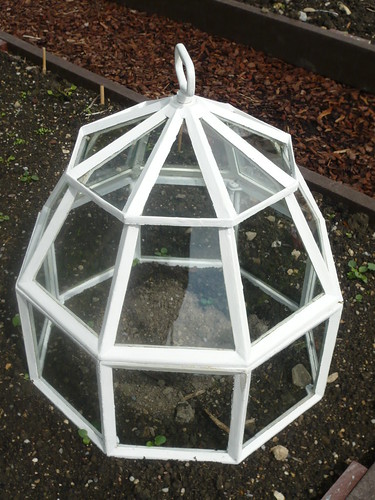Cloche Crop Protection
A cloche is used as a protective covering to shield plants, usually vegetables from the undesirable effects of cold, wind, and predator damage.
- Cloches may be just smaller poly-tunnels used to protect a small number or individual plants.
- Cloches made from plastic are much lighter than glass making them easier to move around. The advantages of glass is that the temperature within a glass cloche will be slightly warmer, they are less likely to be blown around and look better.
- A home made cloche can be made from a cut down plastic pop bottle.
- There are attractive bell shaped cloches available and various shapes like the one above.
How to Use a Cloche
- Put the cloches in place a month before sowing to help warm the soil.
- Sow seeds or plant out under the cloche for protection.
- Cloches can be used in September to protect late crops of Lettuce.
- Consider ventilation and watering when buying a cloche. The roof of this cloche can be lifted off.
- I use a cloche to keep mice away from germinating peas and beans.
A Floating Cloche can be made from sheets of polypropylene fleece which are placed over the seed bed – when the seedlings emerge, the polypropylene is light enough to float up as the plants grow. I like this method for Broad beans peas and early potatoes.
A floating cloche is cheap, easy to put in place and protects the seedlings from three or four degrees of frost. Water permeates the fleece.
Poly Tunnels are another alternative.
Poly tunnel’s supporting hoops should be no more than 2½ feet apart. If spaced further apart the plastic sheeting will droop over the crops and may damage them in rainy or snow conditions.
Make sure the height is adequate for the crops you want to protect.
Related

One thought on “Cloche Crop Protection”
Comments are closed.